New York City, May 31, 2016

★★★★ The morning air was thick, indoors and out. Through the day the light grew clearer and sharper. The street was bright and rattly; the bared arms and legs all around had picked up some color over the weekend. Clouds moved by like a slowly scrolling painted backdrop. Someone in a Maxima with open windows, sitting at the curb, shared his music with half a crosstown block. The late sun was still hot on the rims of the ears. Even at day’s end, though, people remained mostly unwilted.
In Between Daze
A brief history of today’s most pretentious word.

Do you know what the word liminal means? No? Good news. The concept of liminality has a 14,000-word Wikipedia page. Good-faith question: If a 14,000-word Wikipedia entry is necessary to define and trace the history of a word, is it really a good word? Does it not at that point score high on the jargon spectrum, approaching one hundred percent?
Art curators the world over would clearly say no. The word has littered nearly every bit of art writing I’ve read in the last twenty years, excepting perhaps the work of Dave Hickey. It appears in just about every other issue of Artforum for the last ten of those. Now it’s everywhere. Ask a man who has curated an exhibit of cats on the internet to simply compare them to dogs, and he will tell you that, “Cats are more mercurial and liminal.”
God knows why the art people picked this up. I’d like to blame professionalism, but it isn’t even a word most professional art critics have used. Clement Greenberg, who is sometimes credited with having invented American art criticism, never used it. Jed Perl either.
In nearly every instance, the word has been unnecessary. (Are cats liminal? Mine’s pretty blunt about her existence, I have to say.) Even where correctly deployed, it seems superfluous, self-justifying. Last week, it cropped up in an online preview run by the New York Times of the forthcoming Diane Arbus show at the Met Breuer. A pretty but not altogether remarkable photograph of a child waiting to cross the street is subjected to this gloss by the curator:
“Arbus was particularly sensitive to children,” the curator Jeff L. Rosenheim said. “They’re in the process of changing their identities as they grow. She’s at the curb — the curb itself is that liminal stage.”
This smacks of mistaking the artist’s intention for the eventual effect of the picture, but then, all curators talk like this. If they can’t explain the art, then what are they doing? It’s a good question. I thought writing for a living would be a racket, and I’d be paid to pick out good art and go to parties, but since then I’ve learned it’s the art people who have the real scam going.

Long did I assume, like everyone else, that the vogue and the vagueness of liminality came from academia (no one is more to blame for the bad writing of the average holder of a bachelor degree than the postmodern academics). But the word’s been kicking around since the late nineteenth century, mostly used by psychologists. Per the Oxford English Dictionary:
Of or pertaining to the threshold or initial stage of a process. rare. b.b spec. in Psychol. Of or pertaining to a ‘limen’ or ‘threshold.’
“Rare,” heh. People miss that part of the explanation, I guess. They also miss that though liminal sounds like it should be related to the verb limn, which means to depict or to describe something, it is not. Witness: in Michiko Kakutani’s entire history as the New York Times book critic, she has used “limn” 38 times. But she has never, not once, deigned to use the word “liminal.” Searches confirm this.
The first person to use it in the New York Times was actually Herbert Mitgang, in a 1958 trend piece on beards — “a particularly attractive red one had entered the male liminal consciousness,” he wrote — so the fault may not be completely attributable to art criticism.
In the end, it all goes back to psychology. In 1906, one Dr. John Duncan Quackenbos (yes, his real name) published an article on the “Transliminal” in the August edition of the North American Review. Dr. Quackenbos was interested in hypnotism, and he was a member of the London Society for Psychical Research, which still exists. He wrote:
In the transliminal sphere, we are capable of acting independently of a visible corporeity; and, as beings cast in the image of God, we intuitively apprehend, we possess supernormal knowledge and wield supernormal power, we are subject to impression by other human personalities, as well as obnoxious to the touch of higher spiritual intelligences, and we are gifted with a measure of prescience that on occasion forecasts what is to be.
In other and fewer words: the notion of the liminal comes from people who believed in the possibility of supernatural powers. Not all that different from postmodern academics, if you really think about it.
In general, the word threshold could do liminal’s job quite nicely. “Threshold” has a pleasing onomatopoeic effect — there are two main beats in it, and because “hold” is a down beat (don’t bother me with scansion terms, there’s no need to get technical here) it nicely mimics a step. In a pinch, or if you don’t like the slight implication of forward movement in “threshold,” “in-between” does quite nicely. Or “transitional,” though that one can sound a bit too much like you have a masters in public administration.
Of course, these more plain words do not give you the inner moral and intellectual authority of “liminal.” But there are risks. I had a friend who thought the word would be useful in plain conversation. “I am in a liminal state on this streetcar,” she once observed. Very shortly thereafter, everyone quit talking to her. They could not understand a goddamn word she was saying.
Where We're Going, We Don't Need Race
Time-travel narratives and bygone bigotry in “11.22.63” and ‘Back to the Future.’
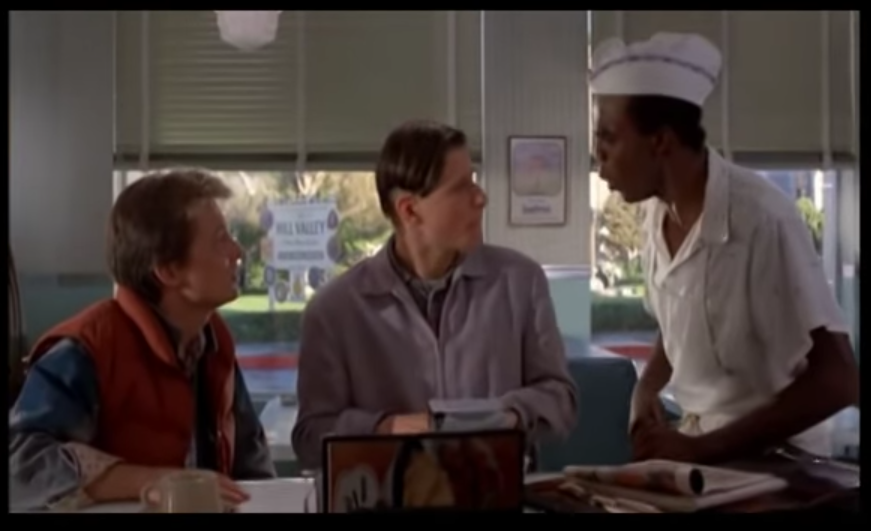
“Here’s how great it is to be white,” Louis CK says in his 2008 special, “Chewed Up.” “I could get in a time machine and go to any time and it would be fucking awesome when I get there. That is exclusively a white privilege.” Nothing flaunts white privilege quite like a time-travel story. But in those narratives, the subject of historical racism, if it’s handled at all, is often dealt with in a haphazard or obligatory way alongside other lesser concerns. Our protagonist usually has some specified mission of more pressing personal import, but nevertheless, the movies remind us, in self-defeating winks and nods, about how much progress we have made on the race stuff. Remember? We used to use paper maps to get around, but now we have GPS. Remember? We thought smoking was okay, but now we know it causes cancer. Remember? People used to say nigger like it was nothing, and now we know better.
Take Back to the Future.
Fifty minutes into the movie, Marty McFly stumbles into a cafe where he witnesses his own father get humiliated by Biff Tannen. Then, as if from the movie’s unconscious, an animated young black man appears, and by his paper hat and apron, we understand him to be an employee of the cafe, not one of its patrons. This is Goldie Wilson, and in thirty years, he will be mayor of Hill Valley. No one knows this but Marty and us.
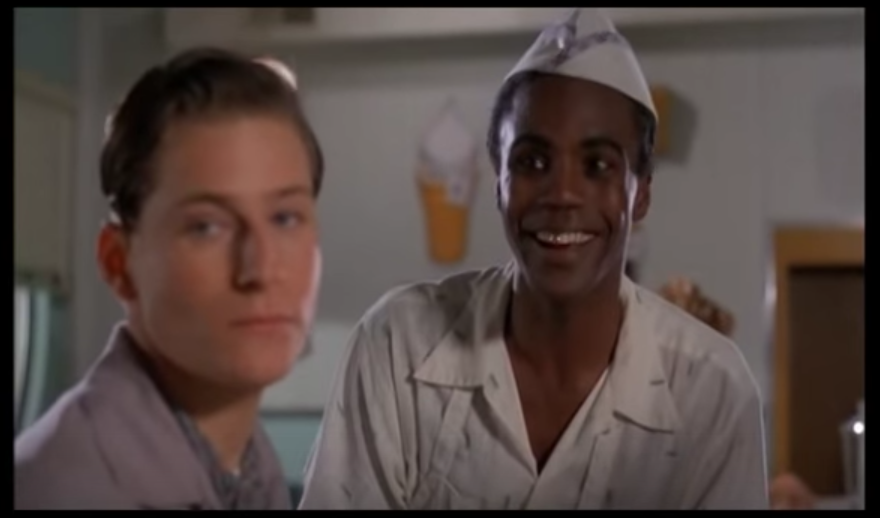
“Stand tall, boah,” Goldie chides George McFly. “Have some respeck fa yaself.” The lines demand to be spelled out here in offensive dialect, because Goldie is an offensive caricature in a movie, admittedly, full of caricatures. (Later in the film, when Biff crashes into a manure truck, Goldie runs flying to the scene to do his best Mantan Moreland impression.) “A colored mayor,” says the cafe owner. “That’ll be the day.” Goldie is undaunted. “You wait and see, Mr. Carruthers, I will be mayor.” His head is high, his chest is out, his gold-capped incisor glints: “And I’m gonna clean up this town.” (“Gooood,” says his grumpy white boss, handing him a broom. “You can start by sweeping the floor.”) Maybe in light of his eventual political career, Goldie is beginning to employ the phraseology of the blustery politician. But the line makes no sense.
We have just watched Marty wander, gape-jawed through the dictionary entry for “Pristine 1950s American Town Square” to the sounds of the period appropriate (and thematically resonant) ditty “Mr. Sandman.” Hill Valley has an alien sheen; the classic cars twinkle. You’ve never seen more symmetrical shrubbery. “This has got to be a dream,” says the bewildered time traveler. What in the world is Goldie Wilson talking about? How can you possibly clean up a place as immaculate as Hill Valley? Unless, of course, there’s another side of town: Goldie’s.

I thought of Goldie Wilson’s side of Hill Valley as I made my way through “11.22.63,” which aired this past spring on Hulu. Starring James Franco, the eight-episode series is an adaptation of Stephen King’s doorstop novel of the same title, although periods — or “bullet holes,” as showrunner Bridget Carpenter calls them — have replaced the book’s forward slashes. Franco shines in the role of Jake Epping, an unhappy English teacher/writer from Maine. When a local restaurateur shows him a secret “rabbit hole” in his diner that can transport a person back to the year 1960 (1958 in the book), Jake embarks on a mission to stop the assassination of JFK and thereby save America from the quagmire of Vietnam and other tragedies.
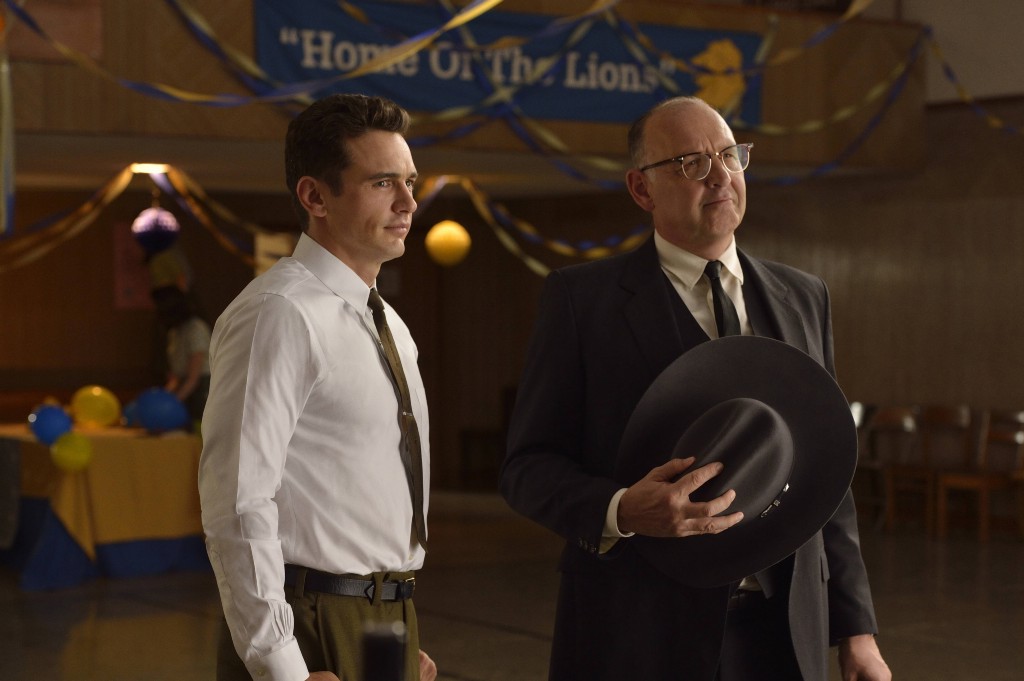
In his quest to re-stitch the fabric of history, Jake makes some highly questionable ethical decisions, falls in love with a beautiful blonde woman, murders a couple of sadistic husbands, and forms an unlikely bond with Miz Mimi, a stern secretary at the high school where he works. Through Jake, we value her intelligence, her heart, her candor. We feel pangs of sadness when we hear that first telltale cough, a heavy-handed harbinger of the cancer that will end her arc. And because her ethnicity is not specified in the novel, we understand that Miz Mimi is white. But in the show, she is portrayed — tenderly, beautifully — by acclaimed stage actress, Tonya Pinkins, who is black.
In a blog entry for Huffington Post, Pinkins reveals that landing the role of Miz Mimi was a conscious attempt by the producers to diversify the cast. But to honestly depict “the experience of a Black woman, in segregated Texas in 1963, encountering a white man from a future 30 years away,” the creators quickly recognized that they had work to do. They had to “create scenes that were not in the novel.” When I asked Carpenter about the casting decision, she said that she “felt strongly that we needed to see Jake interacting with a major supporting character who was black. Description of racism in the background wasn’t going to cut it.”
On the level of character, these new Miz Mimi scenes are the most intrusive changes to King’s novel, and they’re mostly clustered around the third episode of the series, which is titled “Other Voices, Other Rooms,” but which might as well have been called “The One About Ye Olde Racism.” The episode’s primary focus is not Miz Mimi but General Edwin Walker. Walker was a real-life figure, an Army officer turned Confederate-flag-waving segregationist (turned sex offender), who happens to play an integral role in Jake’s larger plan to stop Lee Harvey Oswald.
Early in the episode, when Jake offers to pour Miz Mimi a cup of coffee in the presence of other white teachers and students, they all stop what they’re doing, fall silent, and hold their breath. Poor Jake — good-hearted, from a more progressive future—had forgotten when he was. Later, we hear the coded language of the electrician setting up Jake’s surveillance equipment who mentions the “crisis in America” after proclaiming his love for General Walker. And there is the hate speech offered, apropos of nothing, by Jake’s landlord, perhaps assuming himself in safe company: “I ain’t got a thing in the world against niggers. God who cursed them to their position, not me.”
These encounters take a noticeable toll on Jake, but it isn’t until a yokel gas station attendant refuses to serve a distressed Miz Mimi, telling her to go back to “Niggertown,” that Jake’s anger about all the overt prejudice finally boils over. In this scene—new to the series—Jake snaps, grabbing the attendant by the arm, cursing, chucking wadded up bills. The slight to Miz Mimi offends both his humanity and his chivalry.
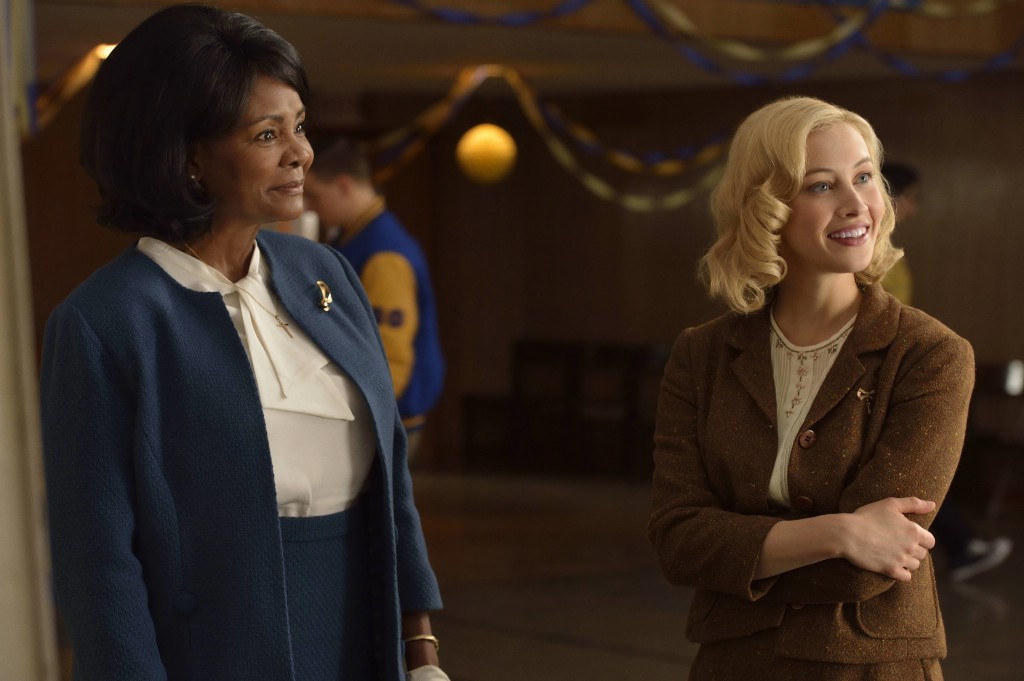
On the one hand, the decision to cast Pinkins in the role of Miz Mimi gives us a black character with dimension whom we sympathize with and propels the show far beyond Back to the Future in its handling of bygone bigotry. (During the school-dance sequence near the end of the movie, when one of Biff’s henchmen calls a member of an all-black doo-wop band a “spook,” Marty is conveniently locked in the trunk of a car.) But on the other hand, Jake remains oblivious, in a very familiar way, to the mission-critical importance of his being a straight white guy.
Vile as the hate speech of his prospective landlord may be, Jake still takes the apartment, because of its proximity to Oswald’s—the plot must go on. Jake is honorable enough to stand up for his black friend, but the show is not honest enough to acknowledge the privilege that allows him to score good-guy points by coming to Miz Mimi’s aid as well as to move into any apartment he chooses.
Imagine Jake Epping completing his mission if Chiwetel Ejiofor were cast in the role. The writers would have to hop in a time machine and get King to rewrite his novel from scratch, a new work possibly titled “Three Years a Colored.” Not because casting a black actor would have made it a time-travel narrative about race, but because our history, which time-travel narratives often like to position as separate from us, would demand it.

Whether it’s Marty McFly in 1950s Hill Valley or Jake Epping in segregated Texas, the entire genre of American time-travel fantasy, with its chaos theory nerdery, butterfly-effect affectations, and desire to reshape the present, is irrevocably linked to the very real idea of white privilege. No narrative of time-travel makes this case more powerfully than Octavia Butler’s masterpiece “Kindred,” which both deconstructed and revolutionized the genre by using time travel to explore the experience of slavery and its lingering effects on the present.
Unlike Back to the Future and “11.22.63,” there is no clear mission to speak of in “Kindred,” at least not one that Dana, the black writer at the center of the novel, is aware of. The circumstances for her time travel are ambiguous and entropic and, for a while, aimless. No rabbit holes. No flux capacitors. The time travel just occurs, suddenly, to Dana, and soon, to her white husband. Butler’s point is not that we are better and more self-aware than the backwards people of the past, nor is it that the past only fills rooms with roaches and erases photographs of family members. Rather, it’s that the past can weigh on the present in devastating ways. “Kindred” reminds us that, for some protagonists, traveling back in time is the opposite of escapist fantasy. The past is alive, says “Kindred.” The past is us.
Nostalgia has long been the mother’s milk of white privilege, even if it is, etymologically speaking, a sickness. Jake’s desire to abandon his mission and remain in the past in “11.22.63” is the single most historically relevant aspect of both the show and the novel. We are living in a very nostalgic historical and political moment, one that longs for the fantasy of American greatness, one that believes, like those probably-not-all-dead-just-yet supporters of General Walker, that America is currently undergoing a crisis.
Compare Jake’s reluctance to returning to the present in “11.22.63” with Dana’s relief every time she leaves the past in “Kindred.” A white divorcee, living on a high school teacher’s salary in a post-industrial New England town, Jake arguably lives a more uncertain, complicated socioeconomic life than he would have fifty years ago. He wants to stay in the segregated 1960s, mission be damned. And we feel for him: the root beer’s sweeter, the pie tastes better, and life is easier for a white guy. But his nostalgic longing for that simplicity comes at a price, paid by the anxieties, indignities, racist landlords, and separatist politicians who sought to crush people like Miz Mimi. It is no wonder we never see her side of town.
Genius Speaks The Unspeakable
Sometimes You Can Be Too Far Out Ahead Of The Culture
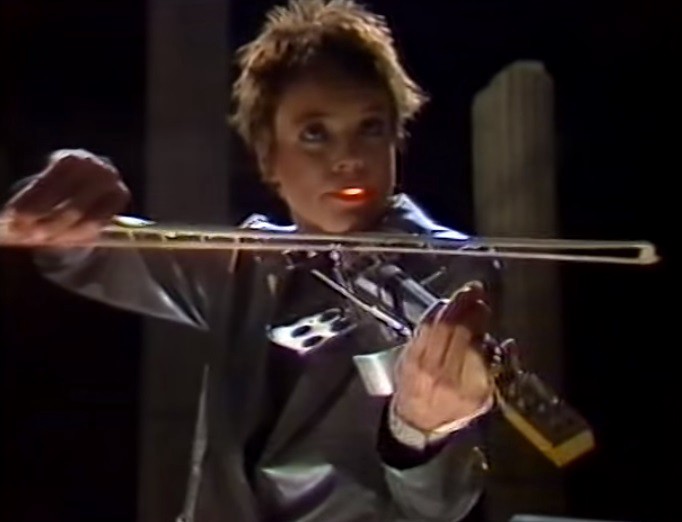
Laurie Anderson was one of the most important performance artists of any era since that designation became a recognized thing; for many people hers is the first face that springs to mind when the subject of performance art is discussed.
It is difficult to convey how much she meant to at least two generations for whom her work created a persistent awareness that boundaries were illusory and that “strange” was a conventional way of dismissing the oddly beautiful inflections which caused fright in those unwilling to let themselves embrace the art — and humanity — implicit within them.
Her influence is felt in such a diffuse range of works our culture produces to this day that the original inspiration she provided is probably unrecognizable to those who have never lived in a world where her creations were innovations to the firmament rather than an indisputable part of it.
But she just said this about Hamilton, so she’s probably going to be in a lot of trouble now:
I saw half of Hamilton. I walked. I just, you know, I thought, “It will be an exception, it won’t be like a musical.” I love all music except musicals. They just make me crazy. I just had to leave…. It’s not that different. It’s history lite, and musical lite, and it’s just … It’s horrible. [laughs] Maybe I should be more open-minded. I just hate it.
Farewell, sweet Laurie. We will try to remember the good times, before you were torn apart for heaping opprobrium on the greatest single thing that ever happened in 50,000 years of culture, language or basic human accomplishment. I’m going to go listen to Big Science and cry.
Soundscan Surprises, Week Ending 5/26
Back-catalog sales numbers of note from Nielsen SoundScan.
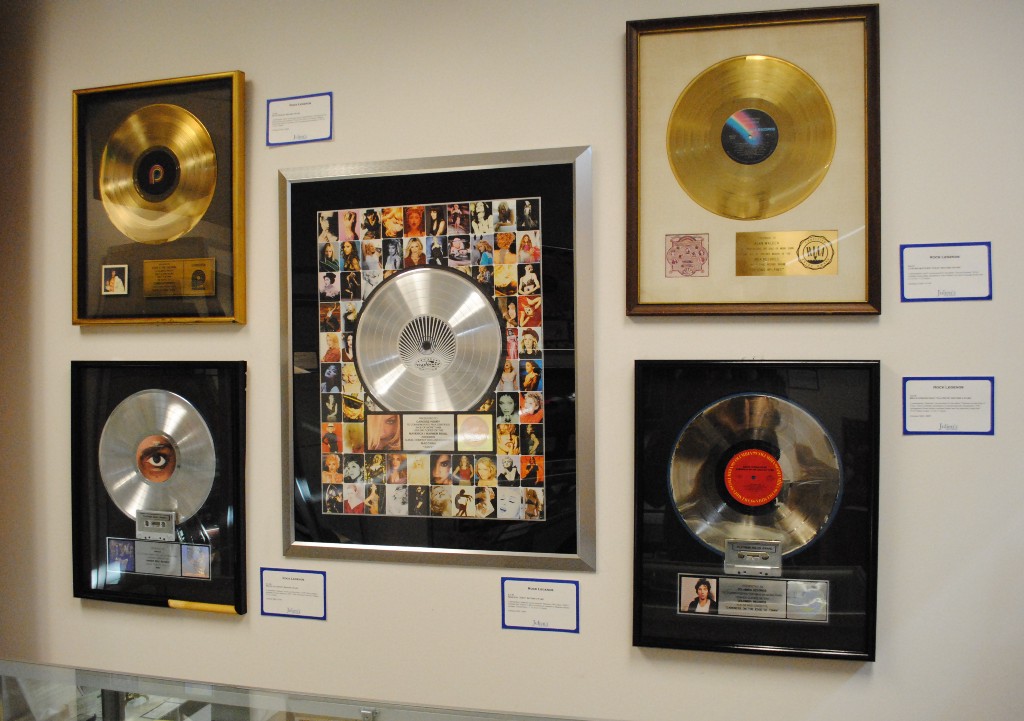
Scream Bloody Gore, the debut album by the death metal band, Death, was just reissued, and saw a 999% jump in sales. It was initially released on May 25, 1987, and is considered by many to be the first “true” death metal record. The band Florida Georgia Line is cited by Wikipedia as a “bro country” duo—their 2012 song “Cruise” was the best-selling country song of all time in 2014, narrowly edging out Lady Antebellum’s crossover hit, “Need You Now.” It sold 6.33 million digital copies, and the 2012 record is still going strong at #88. Their current single, “H.O.L.Y.,” is at the top of the charts—the acronym stands for “high on loving you.” Finally: Travis Tritt’s still got it, just under the wire at #200.
7. DEATH SCREAM BLOODY GORE 4,135 copies
55. SIA 1000 FORMS OF FEAR 1,825 copies
71. JOEL*BILLY THE HITS 1,687 copies
82. FLORIDA GEORGIA LINE HERE’S TO THE GOOD TIMES 1,569 copies
118. VAUGHAN*STEVIE RAY PLAYLIST: THE VERY BEST OF STEVIE RAY VAUGHAN 1,355 copies
140. BEYONCE 4 1,244 copies
185. SIMON*PAUL GRACELAND 1,071 copies
200. TRITT*TRAVIS VERY BEST OF TRAVIS TRITT 1,022 copies
(Previously.)
Maria Usbeck, "Moai Y Yo"
Amparo! Amparo! Amparo!
Listen, I will post every single track from Maria Usbeck’s Amparo if that’s what it takes to get you to realize just how amazing the album is so that you go buy it or play it on Spotify or whatever it is people do for music today. Fortunately, I don’t think that will be necessary: Between this and the video we put up yesterday even the most thick-headed listener will surely be convinced of its brilliance. I would say “enjoy” but I am so confident that you will that I don’t even need to.
New York City, May 30, 2016

★★★ The droplets on the windows became dry spots of grime as the sun very slowly strengthened. The remaining clouds cut the sun’s intensity, and the humidity of the air in the streets was cooling. Whatever threat of rain there was, it was a nonspecific one; through the gaps in the thick compound leaves of the street trees were patches of dark gray and of clear blue. Inside the Park it was muggier, the vegetation still soaked from the overnight rain, the shade preventing it from burning off. The air felt as spongy as the rubberized playground underfoot. The blue was lost again, and the sun became a white scribble behind the returning clouds. On its descent, it assumed the character of something round, behind a smoky layer of lower clouds, and for a while it recovered the power to cast shadows. The roof deck on the tower across the way stayed full of people all day. At cleanup time, the stray pieces of wooden train track on the air conditioner vent were damp to the touch. A thin band of pink on the northwestern horizon was the only visible sunset.
Impossibly Fast-Moving And Veritably Flawless
Stephen Curry and The Warriors are no underdogs.

There’s nothing fair about the Splash Brothers, Steph Curry and Klay Thompson, both legacy NBA players. Like lab-grown meat, they were created with a lot of money, time, and sterile conditions; they’ve turned out technically perfect but mild-mannered and bland. But that doesn’t mean there’s nothing to appreciate about their road to a record-setting season, unanimous MVP, and bid for the 2016 Championship. Carvell Wallace takes a precise, Angellian look at every factor—including Curry’s perfect jump shot and Thompson’s pure shooting as well as Joe Lacob’s venture-capital approach to team-building and Oakland’s rapid gentrification.
There’s also the thrill of the possibility that they might just lose:
One especially devoted Warriors fan, a friend of a friend, said that watching your team win is like taking a hit from drug: it ups your endorphins, makes you feel high, like you’ve accomplished something just by rooting for them. Losing, then, is coming down, facing the harsh reality you left behind. Eventually, everyone loses: athletes get traded, teams come apart, knees buckle, shots are missed, fans age. Early in April, I watched the Warriors play the Boston Celtics. It was the first time all season that any of us had seen the Warriors lose a game at home. People began filing out of the arena with fifteen seconds still left on the game clock; it felt like the blood leaving the body of a corpse. When we are given something good, we want something great. When we are given something great, we want something impossible. Not only did we want the Warriors to surpass seventy-two wins, we wanted them to never lose again. We wanted to defy gravity, to never come down. The next day, at a practice, Steve Kerr talked about the kind of disappointment that is specific to greatness. “It’s like when Steph or Klay has an open three-pointer, and they miss at Oracle, the whole crowd groans because you can’t believe that they missed,” he said. “If we lose a game, it’s like, ‘Oh my god, they lost at home?’ ”
But they’ll probably win. Read the whole thing.
Are Escalators Trying to Eat You?
And other answers to unsolicited questions.
“This morning I found a snail on my driveway. What should I do?” — Driveway Danielle
If we’ve learned anything from Nature the last couple of days, it’s that we ought to leave it the hell alone. Your kid falls into a gorilla cage at the zoo? That’s the gorilla’s kid now. Good luck at gorilla school, kid. Find a shivering bison calf on the road? Don’t put it in your SUV and bring it to a ranger station. The whole middle part of our country used to just be bison, bison, bison. They didn’t need a lift to any ranger station. They don’t need our help all that much. Except they need our help staying the hell away from them.
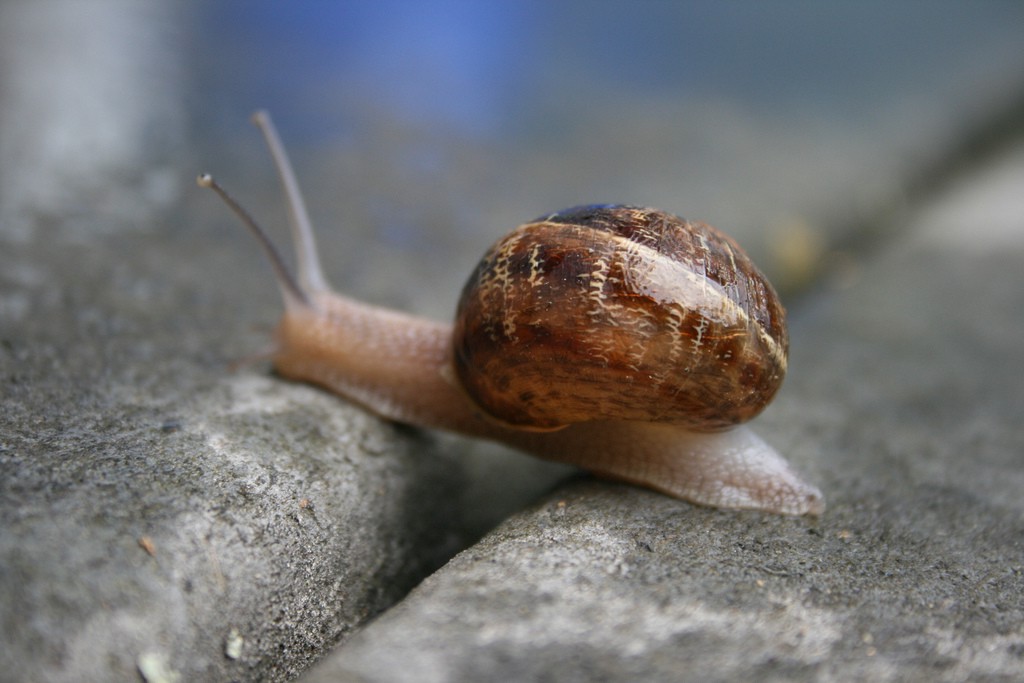
We’ve generally screwed up Nature pretty badly over the last few centuries. In the span of about a hundred and fifty years, we’ve made this planet uninhabitable. Noted smart guy Stephen Hawking says get a new planet. Imagine what we will do to the next one.
I am the kind of guy who tries to trap roaches in containers and set them free outside my apartment. Not because I am so concerned with the lives of roaches; I am sure they have rich inner lives and all. Like that charming roach in the Kafka story. He was a big roach in that story, but I’ve seen bigger. But most of the time, I will take the time to trap and release roaches or bugs I find around the apartment. I do not like to kill, but if I do kill an animal I prefer to eat it. Fish and clams, mostly. If I was ever able to catch a bear, moose or deer, I would definitely eat them. Bison, I’d eat that. Eagle, sure. But roaches or mice, no.
Killing roaches and mice is messy business. If God wanted us to kill roaches, why are they so gross to step on? Their eggs get on your shoe and probably into your foot and just live there forever silently. Until one day, something.
Your snail situation is a toughie. Although snails are apparently delicious, I wouldn’t eat American snails. They’re probably not ripe yet. I just looked into my copy of the Joy of Cooking and cooking snails is a real pain in the ass. And cooking only one snail hardly seems worth it. Can you stay with a friend, for a while, until this whole snail thing blows over? That seems like the best bet. I’m sure if you touch the snail the snail will smell like humans and will be rejected by other snails. And snails are slow as hell, you might be living on your friends’ couch for a few weeks. You can go back and check on the path of the snail every night, and then move back into your place whenever it seems like the coast is clear. The snail will probably get bored of your driveway after a while, unless it is a really great driveway.
“Escalators freak me out. I just don’t know how to ride them and I’m always afraid of being sucked under. What is the correct way to ride an escalator?” — Escalator Eddie
Getting sucked underneath inside escalators is a big problem. Why do you think half of the escalators in Manhattan are constantly being repaired? Because people guts get stuck in all the gears. I fear getting sucked into escalators every time I ride them. That is part of the fun. Will I be sacrificed to the great escalator god or not? No one knows until the ride is over.

And I have some real favorite escalators. The wooden one in Macy’s at 34th St. That one’s almost as fun as riding the Cyclone at Coney Island. Because it is old and rickety and could potentially break apart at any moment. I also like the escalators in Washington, D.C. that go insanely far down into the center of the universe. I know D.C. was built on a swamp, but how the hell far down do you have to go into that swamp to get a subway ride? Apparently miles. I am always afraid I am going to fall down the escalators there because they are steep and endless. Falling down the stairs sucks. I do this around once a year, because I am clumsy. And often drunk. But falling down escalators is a million times worse because the stairs are moving, made of sharp metal pieces, and you will no doubt be eaten by the thing afterwards. Just out of sheer spite. Just right into the gullet of the human-eating stair machine.
There are two invisible lanes on an escalator. On one lane are the people riding correctly. They are holding onto the escalator bannister, slowly ascending or descending. They are one empty set of moving stairs away from the person in front of them. They are not jumping, screaming. They are just standing still, enjoying being lifted up or deposited down. They are not getting their shoelaces tangled inside of the device. People with small children should just take the elevator.
The other lane on escalators should only be used in emergencies. It is the fast lane, for people who are very late and need to jog up the escalator steps as it rises. They are about to miss a train, for example. Or catch up to someone they want to propose marriage to before they join the Marines. Let them go, pay them no mind, many of them will be eaten. If you really want to work out you should jog up the regular stairs like a maniac. Jogging up 15 stairs as the escalator rises is not, in the grand scheme of things, going to make a damned bit of difference to your life in any way. We’d all be better off just enjoying the ride, missing trains, never getting married. Just rising and falling like a fig leaf in the rain.
“I am a professional writer and I have no idea when it’s appropriate to use a comma. I think twitter has, like, wrecked my mind. Can you help?” — Grammar-challenged Gary

I come from Massachusetts. In Massachusetts, they put up Yield signs practically everywhere. There are rotaries all over the place for some reason. And I guess they were just kind of hoping we would figure it out on our own. But no one yields, everyone is always driving like a maniac. It’s hopeless. Writing is like this now. And we’re probably better off for it. Just write, write, write. And let the copy editors from The New Yorker fix everything. Editors are wonderful people, they love grammar so much. They have arguments between themselves about dashes and hyphens. For all I know you’re supposed to put commas between words. In Ben Franklin’s day he used to spell words differently within the same letter. Who cares about commas when escalators are trying to kill us?
Jim Behrle lives in Jersey City, NJ and works in a bookstore.
Let Them Bake Cake
Why “The Great British Bake Off” Didn’t Translate Into American.

The most popular television program in the United Kingdom last year was an amateur baking competition, in which the contestants show off their technical skills and creativity with puddings and pastries. “The Great British Bake Off” is a BBC show that PBS began carrying in 2015 under the title “The Great British Baking Show,” and American viewers can’t seem to get enough. In a tent on the lawn of an English manor, Celebrity chef Paul Hollywood and Mary Berry, England’s grande dame of cookbooks, judge the creations; they are as withering as it’s possible to be about rosewater and Victoria sponge. But “American Idol” for cakes this is not. Mel Giedroyc and Sue Perkins, a well-known comedy duo (“Mel and Sue”), leaven the proceedings with color commentary and light innuendo. There are no villains or alliances; the bakers help one another race against the clock. The worst thing to happen on the show was the tossing of a failed Baked Alaska into the trash, in an event now known as “bingate” or the “#bincident.” The show has been so successful in Britain (the most recent season finale drew fourteen and a half million viewers) that it’s inspired spinoffs in seventeen other countries, from South Africa to Ukraine, with varying levels of success and renewal. Curiously, no American version of the show has ever taken off.
CBS tried in 2013 with “The American Baking Competition,” a show very similar to the original in structure, down to the inclusion of Paul Hollywood. But something about the formula was off. Jeff Foxworthy’s jokes were a little too daddish and soft — the “soggy bottom” joke doesn’t quite land in an American accent — and Hollywood’s dynamic with co-judge Marcela Valladolid, a young Mexican Food Network star, was notably different (it was later revealed that they had an affair). The bakes were slightly less ambitious — one of the technical challenges was to make s’mores. Most significantly, there were stakes. The winner received a prize of a quarter of a million dollars and a cookbook contract with Simon and Schuster, whereas the British version has no prize at all but the glory of being crowned the country’s best amateur baker. In “Bake Off,” the contestants got to go home during the week, to see their families and practice their bakes. But in this version, the contestants were deprived of their families and homes until the competition was over. This ratcheted the pressure and emotions up to an especially high pitch, driving some contestants to tearful thoughts of their children their debts. The show ratings were abysmal and the show was not renewed.
ABC gave it another run in 2015 with a Christmas special called “The Great Holiday Baking Show.” This time, Mary Berry judged with pastry chef Johnny Iuzzini, the leather-jacketed bad boy of desserts, and there was no funny business beyond some giggles about Berry’s pronunciation of “tutti frutti.” The producers took great pains to remain so faithful to the British original that they even filmed it all in England, in the same tent using the same ovens with retractable doors (one hopes they were provided a new set of measuring cups). The hosts, married actors Nia Vardalos and Ian Gomez, didn’t quite possess Mel and Sue’s knack for delivering a bad joke and still making it funny. Their commentary was sedate, so their praise came off as a little too kind. Indeed, the most damning thing one can say about “Bake Off” is that it’s sweet TV, the television equivalent of a feel-good Upworthy post that would go viral on Facebook (“This Show About Cakes Will Restore Your Faith in Humanity”). Even the British version came under a fair amount of criticism from viewers who found it tediously nice or evidence of a reversion to “the twee and the gentle.”
It’s not as though desserts are uncharted territory for successful cooking shows in the U.S. — we’ve had “Cake Boss,” “Ace of Cakes,” “DC Cupcakes,” and “Top Chef: Just Desserts.” And it’s not that American bakers are any less technically skilled than the Brits, except perhaps in their French pronunciation (the U.S. version opts for “pastry cream” instead of “creme patissiere” and “choux tower” instead of “croquembouche”). The casting in both versions is conscientiously diverse. But from the tea cakes to the puns, it’s all just very British. One can see how ABC might have hoped for a Christmas show to work, because of the overall animating principle of holiday spirit. The holidays are always a heady mix of nostalgia and traditions wrapped around flour and sugar, but in Britain, the animating spirit is ever thus. Moreover, baking has a strong working-class tradition — Paul Hollywood’s father and grandfather and Mary Berry’s great-great grandfather were all master bakers.
But “Bake Off”’s success has less to do with national identity than with national psyche. The show is a reminder that awfully boring-sounding amateur leisure activities — like knitting or building model trains — can be valuable for a well-balanced spirit. BBC Two is in fact doubling down on “Keep Calm and Carry On” television with somehow even more British-sounding programming like “Great British Garden Revival” and “Great Pottery Throw Down.” But in America, where we talk about lengths in football fields and television ratings in fractions of Super Bowls, our entertainment is oriented more toward competition and celebrity rather than deep pleasure in craft. The Americans on these shows also tended to have a less peaceful relationship with desserts. On CBS, there was a diabetic who couldn’t eat her own treats and not one but two gym rats — a fireman and a sorority sister — who were openly resented by their peers for fattening them up.
The original “Bake Off” captures the quirky, gentle competition of a spelling bee, combines it with the urgency of a cooking show, and adds a pinch of provincialism. But more than that, it’s a show about a hobby, and the status quo, and that is the most British thing of all. In her New Yorker profile of Sharon Horgan, Willa Paskin nails the difference between British and American Television. She’s writing about sitcoms, but the heart of the observation is the same:
U.K. sitcoms tend to be darker than American ones, encouraged by a powerful public broadcasting system whose aim is to serve the varying tastes of taxpayers, not the upbeat preferences of advertisers, and by a national psyche fixated on the immutability of the class system, not on a dream of self-improvement. Americans believe that things will get better. Brits laugh at how things stay the same. To become a hit in the United States, “The Office” not only had to transform the tragic, grating boss into a less tragic, less grating, more well-meaning boss; it had to cast off the message, central to the British original, that work is where you go to waste your life.
To become a hit in the United States, “Bake Off” would have to cast off the message that baking cakes is just a thing to do to pass the time when you’re not wasting your life. The preferred American activity is to watch other people wasting their lives, ideally while they, and possibly we, are wasted. Hence: Vanderpump Rules.
